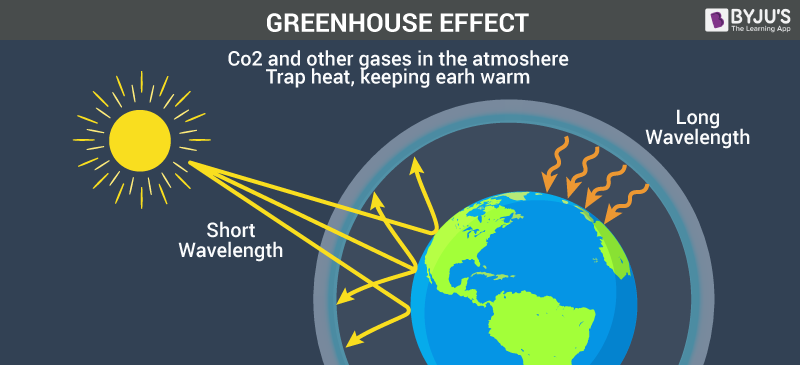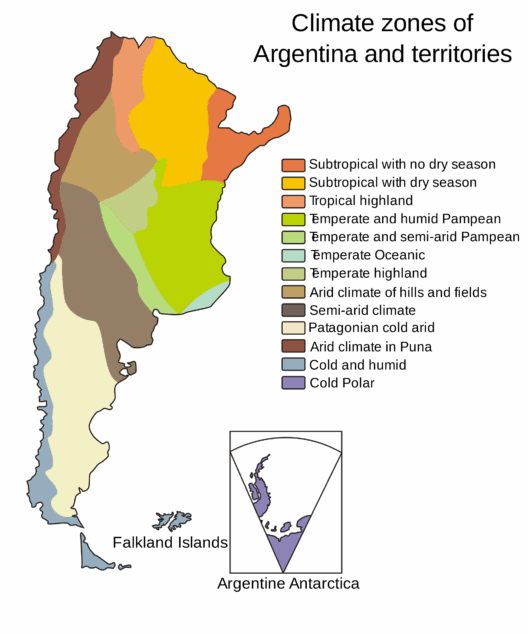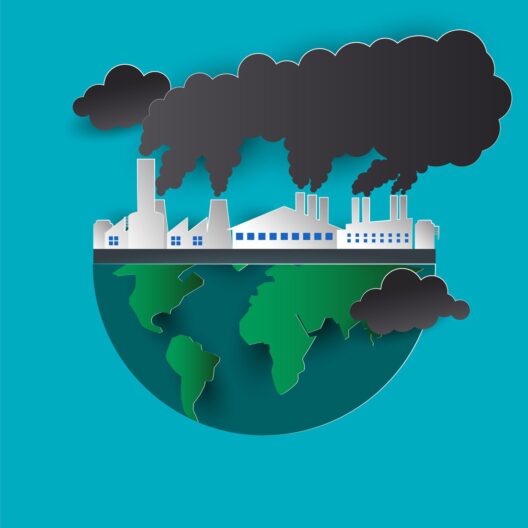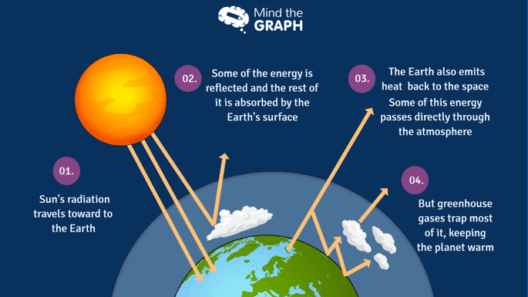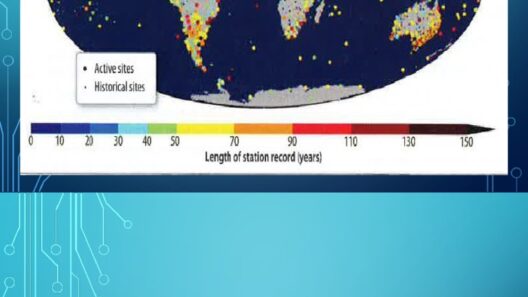The greenhouse effect is a natural phenomenon that plays a crucial role in regulating the Earth’s climate. However, human activities have significantly amplified this effect, leading to increased global temperatures. Understanding the gases that contribute to this warming is essential for addressing climate change and its consequences. This article explores the primary greenhouse gases, their sources, and their impact on our planet.
Greenhouse gases (GHGs) trap heat in the atmosphere, creating a blanket-like effect that keeps the Earth warm enough to sustain life. However, an excess of GHGs can lead to an imbalance, causing global temperatures to rise. The most significant contributors to the greenhouse effect include carbon dioxide (CO2), methane (CH4), nitrous oxide (N2O), and fluorinated gases. Each of these gases has distinct properties, atmospheric lifetimes, and sources, contributing to the complexities of climate change.
Understanding these gases is pivotal not only for environmental scientists but also for policymakers, industries, and individuals who seek to mitigate climate change. Here, we delve into each of these gases to shed light on their characteristics, sources, and the risks they pose to our climate.
Carbon Dioxide: The Pervasive Culprit
Carbon dioxide is the most prevalent greenhouse gas emitted by human activities, primarily due to fossil fuel combustion. It is released when coal, natural gas, and oil are burned for energy, transportation, and industrial processes. Deforestation also contributes to CO2 emissions, as trees that absorb carbon dioxide are cut down. In the atmosphere, CO2 has a long atmospheric lifetime, which means it can remain for thousands of years, gradually increasing its concentration.
While the natural carbon cycle plays a role in maintaining a balance of CO2, human-induced emissions have far exceeded natural absorption capacities. This imbalance is a significant driver of climate change, resulting in rising global temperatures, melting ice caps, and shifting weather patterns. The critical concern surrounding carbon dioxide is its pervasive presence. Understanding and reducing CO2 emissions is vital for any effective climate action plan.
Methane: A Potent Warming Agent
Methane is another significant greenhouse gas, with a global warming potential that is more than 25 times greater than that of carbon dioxide over a 100-year period. Although it is less abundant in the atmosphere—making up about 1.8 ppm compared to CO2’s over 400 ppm—its potency and shorter atmospheric lifespan contribute to its impact. Methane is released during the production and transport of coal, oil, and natural gas. It is also emitted by livestock through digestion, as well as from rice paddies, landfills, and other agricultural practices.
The concern with methane lies in its rapid heat-trapping capabilities, making it an immediate threat to climate stability. Addressing methane emissions through improved agricultural practices, waste management, and energy operations can be one of the fastest and most effective ways to reduce short-term climate warming.
Nitrous Oxide: The Agricultural Impact
Nitrous oxide is another potent greenhouse gas, about 298 times more effective than CO2 at trapping heat over a century. However, nitrous oxide is emitted in far smaller quantities. Its primary sources are agricultural activities, particularly the use of synthetic fertilizers, which release N2O when they break down in the soil. Other sources include fossil fuel combustion and certain industrial processes.
The challenge with nitrous oxide is its invisibility. While not as prevalent as CO2 or methane, its higher warming potential makes it a significant player in climate change. Therefore, understanding agricultural practices and promoting sustainable farming methods can greatly reduce nitrous oxide emissions, contributing to a healthier atmosphere and ecosystem.
Fluorinated Gases: The Industrial Category
Fluorinated gases are a group of synthetic greenhouse gases that include hydrofluorocarbons (HFCs), perfluorocarbons (PFCs), and sulfur hexafluoride (SF6). Although they are present in much lower concentrations than CO2, methane, and nitrous oxide, their global warming potentials are thousands of times greater than carbon dioxide. These gases are primarily released through industrial processes, refrigeration, and air conditioning systems.
The use of fluorinated gases has been scrutinized due to their potency and long atmospheric lifetimes, which can extend from a few years to thousands of years. Transitioning to alternative substances that are less harmful to the environment is critical in reducing the overall impact of GHGs and ensuring compliance with international climate agreements.
The Interconnectedness of GHGs and Climate Change
The rise of greenhouse gases is a pressing issue ushering in dire consequences for humanity and the planet. Climate change manifests through extreme weather events, biodiversity loss, and rising sea levels, directly correlated to GHG concentrations in the atmosphere. It highlights the urgency of reducing emissions and enhancing carbon sinks.
Mitigation strategies, such as transitioning to renewable energy, enhancing energy efficiency, and adopting sustainable agricultural practices, are pivotal in limiting greenhouse gas emissions. Ultimately, the goal is to stabilize the atmospheric concentration of these gases to prevent catastrophic global warming and its associated impacts.
In conclusion, understanding the gases that cause the greenhouse effect is essential in addressing the challenge of rising global temperatures. Carbon dioxide, methane, nitrous oxide, and fluorinated gases each present unique challenges and opportunities for mitigation. By taking decisive action to reduce emissions and invest in sustainable practices, individuals, industries, and governments can contribute to a more sustainable and resilient future for our planet.



